[Click on BLUE links for sources and information]
If you’ve read our past blogs you may be aware that Think in the Morning has long been fascinated by Oaxacan Wood Carvings also known as Alebrijes (although this name originated with the papier-mâché animals created by Pedro Linares) . Consider, for example, Alebrijes Make Me Happy or A Puerto Vallarta Story or Lucy’s CuCu Cabana to name just a few posts we have devoted to the subject. The quality, craftsmanship, and materials can differ greatly from one artist to another. Thus, the question arises, should we call these carvings folk art or fine art? The process of distinguishing between folk art and fine art reminds me of something I first learned studying economics: The Keynesian Beauty Contest:
Keynes described the action of rational agents in a market using an analogy based on a fictional newspaper contest, in which entrants are asked to choose the six most attractive faces from a hundred photographs. Those who picked the most popular faces are then eligible for a prize.
A naive strategy would be to choose the face that, in the opinion of the entrant, is the most handsome. A more sophisticated contest entrant, wishing to maximize the chances of winning a prize, would think about what the majority perception of attractive is, and then make a selection based on some inference from their knowledge of public perceptions. This can be carried one step further to take into account the fact that other entrants would each have their own opinion of what public perceptions are. Thus the strategy can be extended to the next order and the next and so on, at each level attempting to predict the eventual outcome of the process based on the reasoning of other rational agents.
“It is not a case of choosing those [faces] that, to the best of one’s judgment, are really the prettiest, nor even those that average opinion genuinely thinks the prettiest. We have reached the third degree where we devote our intelligences to anticipating what average opinion expects the average opinion to be. And there are some, I believe, who practice the fourth, fifth and higher degrees.” (Keynes, General Theory of Employment, Interest and Money, 1936).
At Think in the Morning our answer to the question (folk art or fine art) is simple … all these carvings are art in one form or another. You may remember an old Pizza Hut Commercial where Dallas Cowboys owner Jerry Jones asks the multi-talented athlete Deion Sanders whether he wants to play baseball or football and Sanders answers BOTH. There is no reason why you should eschew an alebrije you fancy just because someone calls it folk art or fine art. You should be the judge. You can own both.
Using this imminently reasonable philosophy, we at Think in the Morning have acquired (we shudder to say) well over a hundred Oaxacan Wood Carvings. As we are getting older, we recently realized we may have to leave some of these beautiful artifacts behind when we journey into never never land. Thus, we have decided to categorize, photograph, and make a few comments on our stash of folk/fine art for those we leave behind so they might better appreciate our eccentricities in acquiring them. The three above mentioned blogs serve as a beginning for our project. We continue here with three well known families of carvers. Rest assured, there are many many more to follow.
Alebrijes recently made the big screen in the movie CoCo. We started noticing the charm of Oaxacan wood carvings long before the movie. In 2001 we visited the factory of Pepe Santiago. Recently we have been enthralled with Julia Fuentes and her husband Jose Juan Melchior. Julia is the daughter of “the renowned artisans Epifanio Fuentes and Laurencno Santiago.
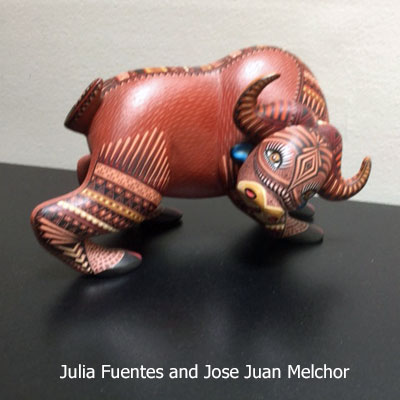
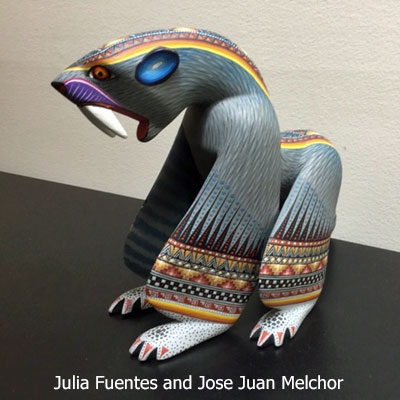
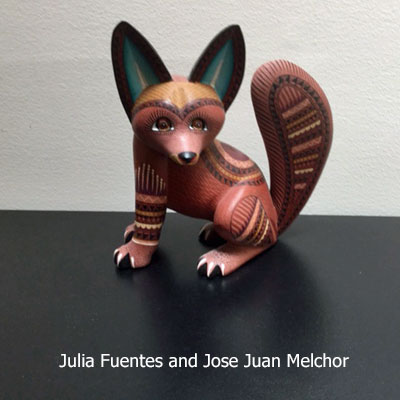
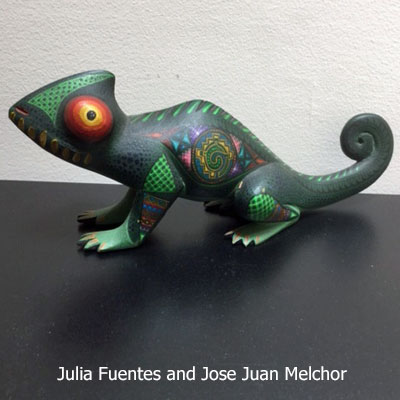
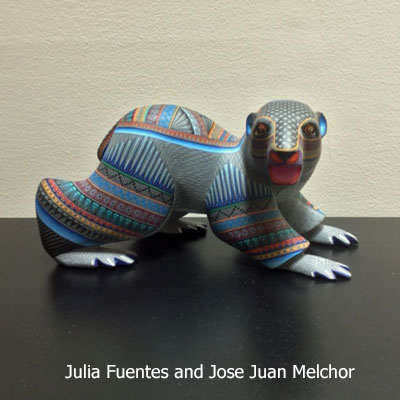
Jacobo and Maria Angeles are among the most successful artists operating in the magical realm of alebrijes. They “won over the Pixar filmmakers working on Coco and inspired them to incorporate alebrijes into their film.” Their industrious workshop is in the village of San Martín Tilcajete located in the beautiful valle de Oaxaca. They give informative workshops describing the wood, the paint, and the techniques that lead to their unique style of alebrije art.
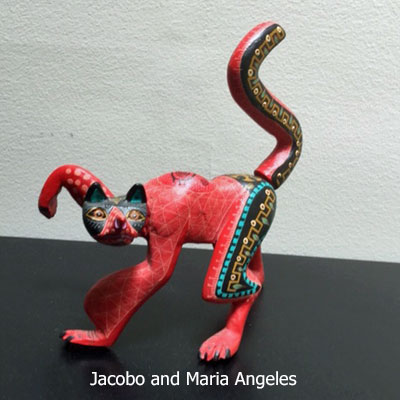
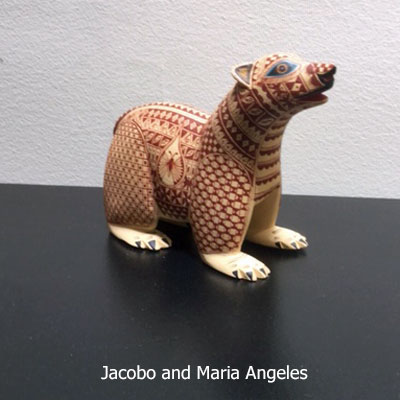
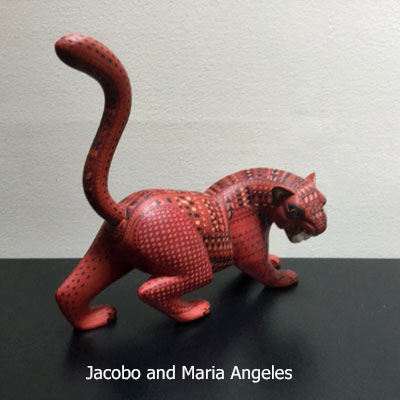
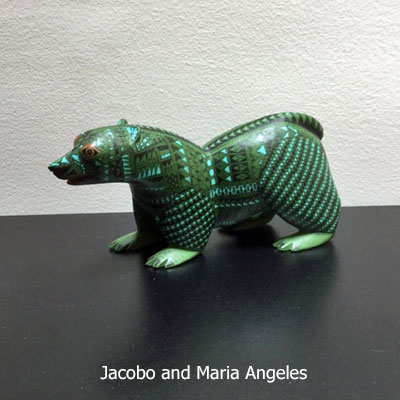

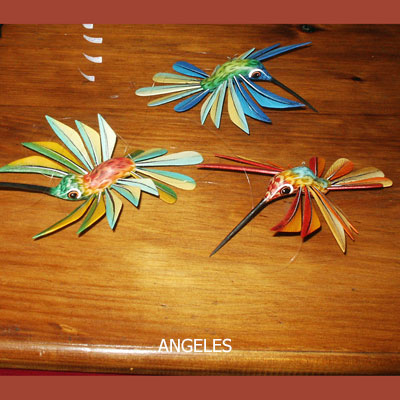
One of the delights of searching out alebrijes outside the historic city of Oaxaca is having the opportunity to visit with the artists and their families. Mostly they are very humble people who have happily discovered a niche where they can excel. Maximiliano and Francisco Morales were one such family we visited on one of our trips to Oaxaca.
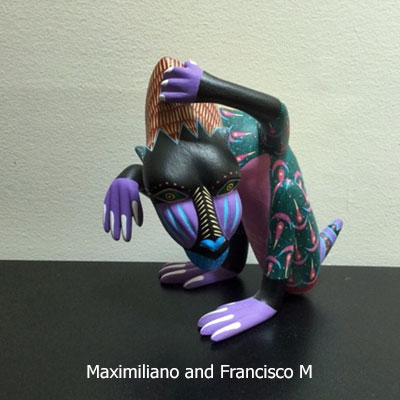
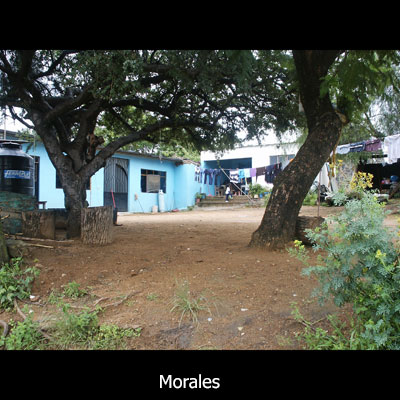
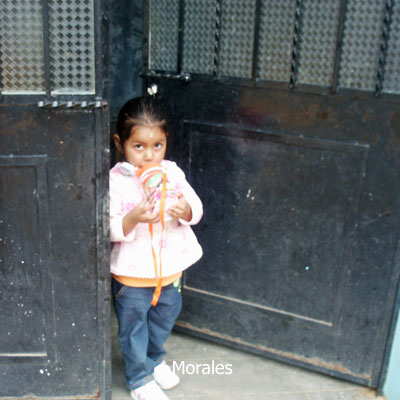
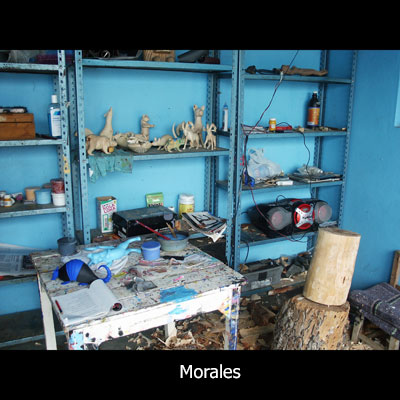
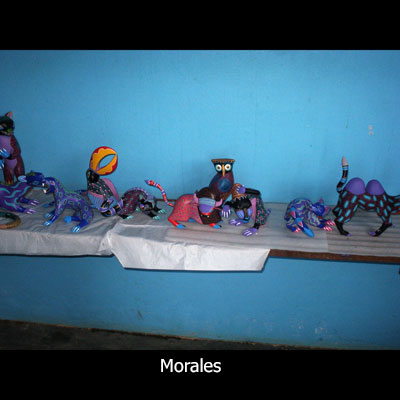
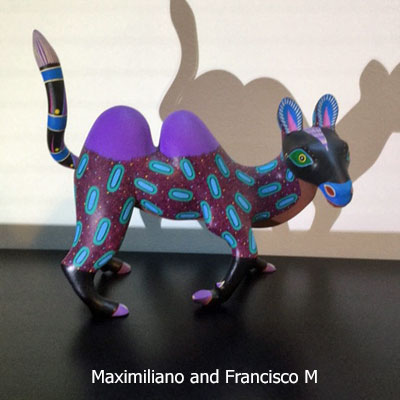
So, folk art or fine art, we don’t much care. It’s all art to us, the carvings, the valley, the villages, the literature, the city, the history, the people, the food, the mezcal–Oaxaca draws us back every year with its honest and sincere character. Put it on your list ! You will not regret it.
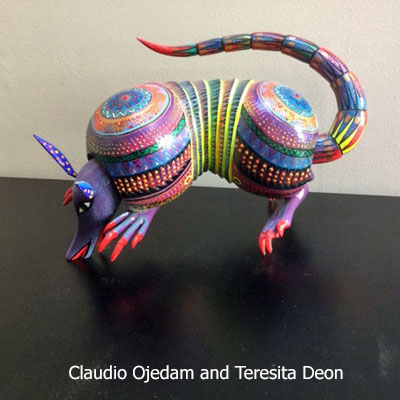

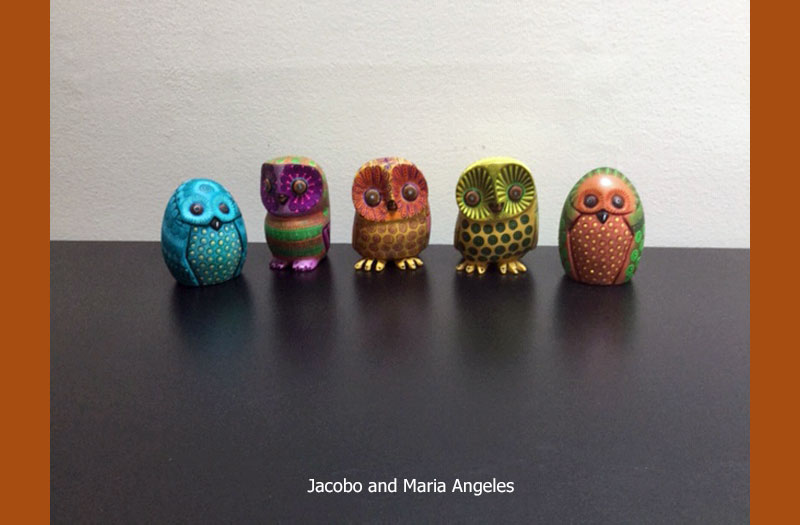
I agree, David. Folk art or Fine Art, who cares. What is art? Something that is created by an artist. Who is an artist? Someone who is working at producing art. Whether it is good art or bad art, of course, is another question.
What I see in your Alebrijes is some very fine sculpture – unique in form and color. I can see why you have collected them. I would to!
I think they’re cute.